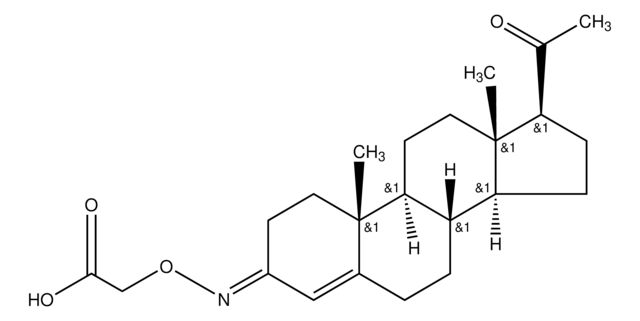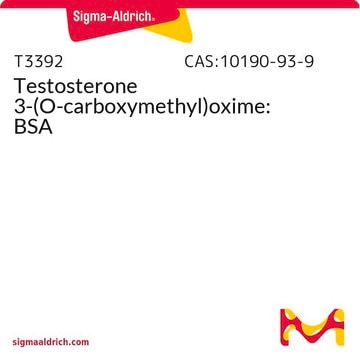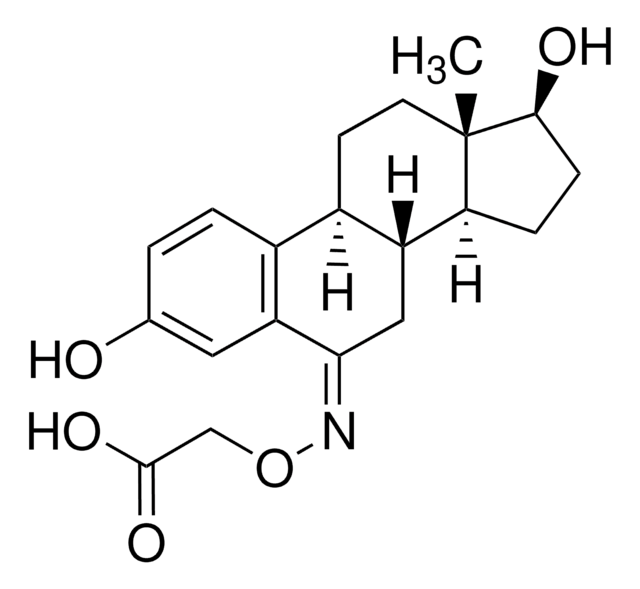The solution stability of this product has not been determined internally. Various sources state that solutions in DMSO or DMF may be stored at -20° for up to 3 months. The solution stability should be determined by the end-user.
Wichtige Dokumente
W102
(R)-(+)-WIN 55,212-2 -mesylat (Salz)
≥98% (HPLC), powder, CB2 agonist
Synonym(e):
(R)-(+)-[2,3-Dihydro-5-methyl-3[(4-morpholinyl)methyl]pyrrolo[1,2,3-de]-1,4-benzoxazinyl]-(1-naphthalenyl)methanon -mesylat (Salz), WIN 55212-2 -methansulfonat, WIN 552122 -mesylat
Größe auswählen
Größe auswählen
About This Item
Empfohlene Produkte
Produktbezeichnung
(R)-(+)-WIN 55,212-2 -mesylat (Salz), ≥98% (HPLC)
Qualitätsniveau
Assay
≥98% (HPLC)
Form
powder
Arzneimittelkontrolle
regulated under CDSA - not available from Sigma-Aldrich Canada
Farbe
white to beige
Löslichkeit
0.1 M HCl: 0.25 mg/mL
DMSO: 12 mg/mL
45% (w/v) aq 2-hydroxypropyl-β-cyclodextrin: 2.4 mg/mL
0.1 M NaOH: insoluble
H2O: insoluble
SMILES String
CS(O)(=O)=O.Cc1c(C(=O)c2cccc3ccccc23)c4cccc5OC[C@@H](CN6CCOCC6)n1c45
InChI
1S/C27H26N2O3.CH4O3S/c1-18-25(27(30)22-9-4-7-19-6-2-3-8-21(19)22)23-10-5-11-24-26(23)29(18)20(17-32-24)16-28-12-14-31-15-13-28;1-5(2,3)4/h2-11,20H,12-17H2,1H3;1H3,(H,2,3,4)/t20-;/m1./s1
InChIKey
FSGCSTPOPBJYSX-VEIFNGETSA-N
Angaben zum Gen
human ... CNR1(1268) , CNR2(1269)
Allgemeine Beschreibung
Anwendung
Biochem./physiol. Wirkung
Leistungsmerkmale und Vorteile
Angaben zur Herstellung
Rechtliche Hinweise
Lagerklassenschlüssel
11 - Combustible Solids
WGK
WGK 3
Flammpunkt (°F)
Not applicable
Flammpunkt (°C)
Not applicable
Persönliche Schutzausrüstung
Eyeshields, Gloves, type N95 (US)
Hier finden Sie alle aktuellen Versionen:
Analysenzertifikate (COA)
Die passende Version wird nicht angezeigt?
Wenn Sie eine bestimmte Version benötigen, können Sie anhand der Lot- oder Chargennummer nach einem spezifischen Zertifikat suchen.
Besitzen Sie dieses Produkt bereits?
In der Dokumentenbibliothek finden Sie die Dokumentation zu den Produkten, die Sie kürzlich erworben haben.
Kunden haben sich ebenfalls angesehen
-
Once reconstituted, at what temperature should it be kept?
1 Antwort-
Hilfreich?
-
-
Can WIN be dissolved in Dimethylformamide (DMF) to achieve a concentration of 10 mM?
1 Antwort-
The solubility of this chemical in DMF has not been officially determined. Nevertheless, according to various sources, this chemical can be solubilized in approximately 30 mg/ml of DMF.
Hilfreich?
-
-
Hello, How should this product be stored (what temperature ?). Thanks in advance.
1 Antwort-
This product is to be stored in room temperature.
Hilfreich?
-
-
Is WIN dissolvable in Dimethylformamide (DMF) in a concentration of 10 mM?
1 Antwort-
The solubility of this chemical in DMF has not been determined. However, various sources state this chemical can be solubilized in about 30 mg/ml of DMF.
Hilfreich?
-
Aktive Filter
Unser Team von Wissenschaftlern verfügt über Erfahrung in allen Forschungsbereichen einschließlich Life Science, Materialwissenschaften, chemischer Synthese, Chromatographie, Analytik und vielen mehr..
Setzen Sie sich mit dem technischen Dienst in Verbindung.














